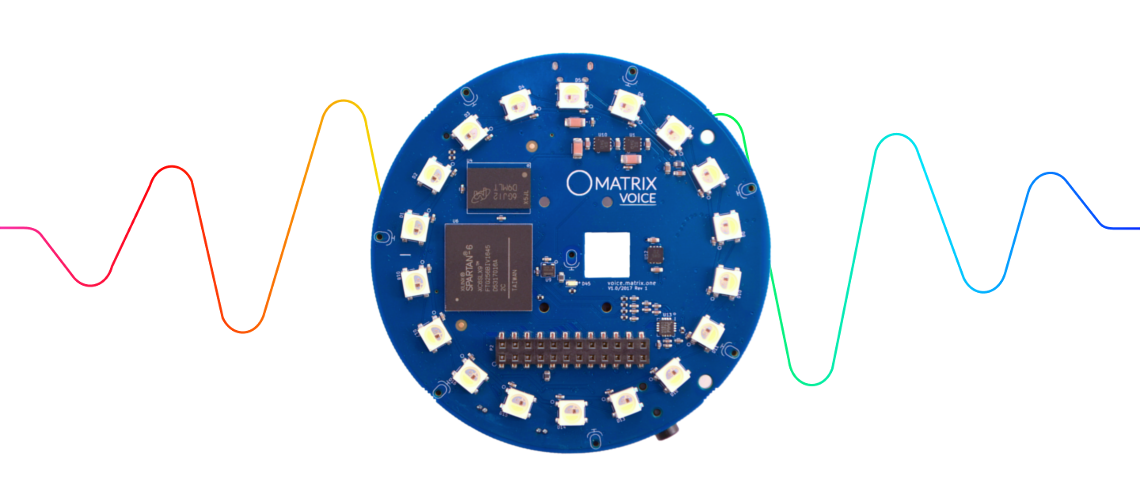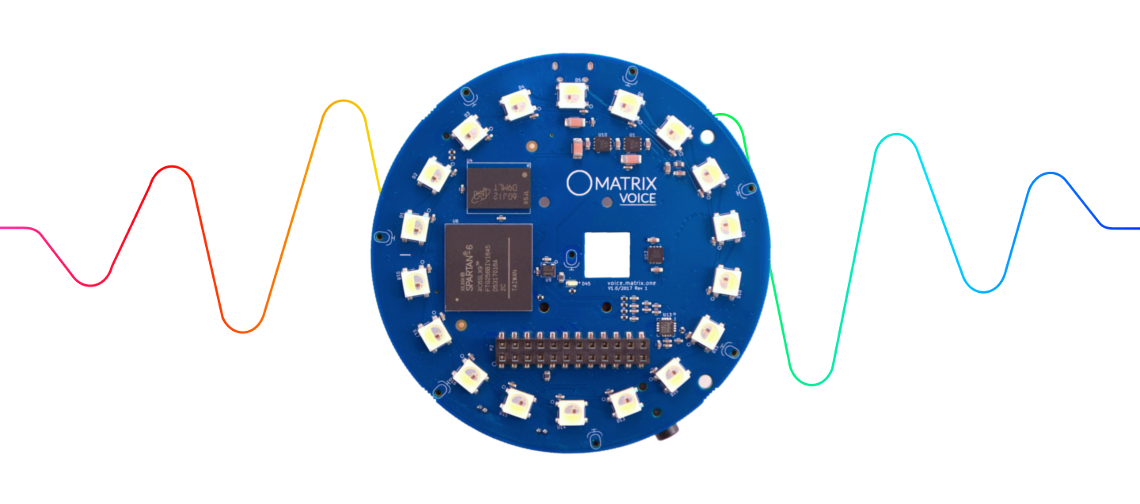
AdMobilize Debuts Voice Recognition Tech And Service Handshake For Digital Signage
March 21, 2018 by Dave Haynes

The use case for voice recognition tech in digital signage seems a little vague and elusive, but Miami AI/computer vision startup AdMobilize suggests it will work well for things like mall and other building directories.
The company is touting its $55 Matrix Voice development board as an easy, low-cost tool to allow shoppers and others to walk up to a digital directory and talk to it, in much the same way as they may use voice-based assistance on their smartphones or home-based gadgets like Alexa or Google Home.
“We believe that voice engagement technologies will make digital signage a more compelling and sticky communications solution for an even broader range of vertical markets,” says company co-founder and CEO Rodolfo Saccoman. “The combination of audience analytics and voice recognition functionality truly represents the next chapter in this constantly evolving industry — and AdMobilize is at the forefront of making this chapter a reality.”
A company press release says:
Available for only $55.00, MATRIX Voice will integrate with any voice recognition service (Amazon Alexa, Google Assistant or any other third-party service) at any time. “MATRIX Voice puts the power of flexibility directly in the hands of the manufacturer and systems integrator, freeing them from being confined to any one of the currently available voice services. This enables plug-and-play custom voice solutions to go mainstream,” Saccoman says.
Equally important, says Saccoman, is the complete security that MATRIX Voice provides. For retailers who do not want Amazon listening to, recording and storing all store information on its cloud, MATRIX Voice is the ideal solution as it provides the capability to process voice recognition at the edge and not strictly in the cloud.
MATRIX Voice can be run on a Raspberry Pi or standalone, using an optional module (ESP32) that equips it with a micro-controller, as well as Wi-Fi and Bluetooth connectivity. MATRIX Voice has an 8 microphone array, a 3.5mm audio output jack, 2 speaker outputs, a 3A audio amplifier, 24 expansion GPIO ports, 64MB of RAM, 64MB of Flash, and the second tier Spartan 6 FPGA that allows manufacturers and integrators to customize the functions of the GPIO pins as well as implement one’s own audio and voice algorithms.
From a software perspective, the company has created 3 library layers to program the MATRIX Voice.
The first layer, HAL, allows integrators to program it in C++, providing the closest access to the hardware.
The second layer, MATRIX Core, contains protocol buffers and ZeroMQ that enable designers to program the MATRIX Voice in over 40 languages for complete interoperability with any pre-existing code base.
Finally, the third and highest layer, MOS (MATRIX Open System), empowers users to easily and quickly program the MATRIX Voice in JavaScript with as little as 1 line of code as well as take advantage of the company’s remade infrastructure which includes dashboard, remote deployment through its CLI tool, simple communication between devices (crosstalk), and much more.
“Let’s say you have 50 digital screen directories already installed within a mall,” Saccoman explains. “With MATRIX Voice you can now place it within the top or bottom of the directory (depending on space and optimal audio clarity for the microphones) and then use a 3rd party voice recognition service to create custom ‘wake’ words and responses to enable the shopper to ask, ‘Directory, where is Macy’s?’ and have the directory respond with the route to Macy’s from the shoppers location. All sorts of voice activated cues and information can now be programmed into a digital signage network, opening up the door to a whole new series of applications.”
The company has a booth at DSE.
I remain skeptical about this sort of thing. I find these voice recognition devices and services a little flakey (I have had a Google Home for the last year). You ask for this and it tells you that.
I also don’t think it is natural, yet, for people to talk at things and expect responses, so users will have to both be taught and encouraged. I also wonder whether this solves a problem, or is just a slightly gimmicky way to do reasonably simple look-ups.
On the other hand, there are times when I am looking at a mall directory sorted by category, trying to find a retailer that maybe doesn’t fit an obvious category like Shoes. Being able to say “Where is the Blank Blank?” and getting help with that would be welcomed.
It may also have a logical role for people with disabilities.



Leave a comment